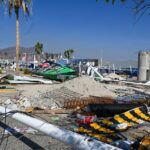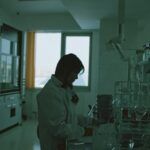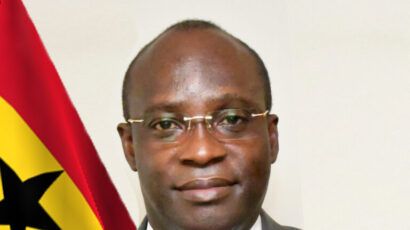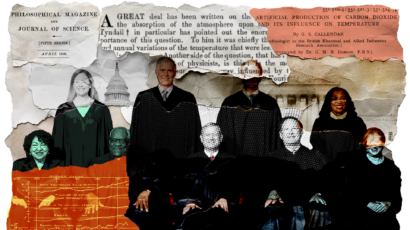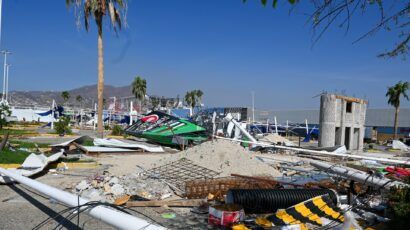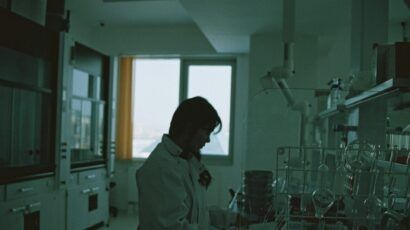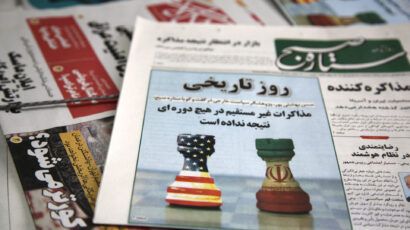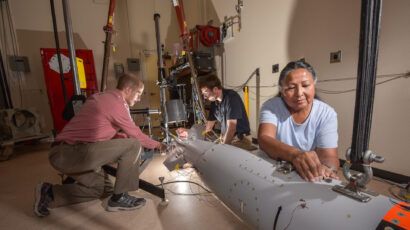Why South Korea needs pyroprocessing
By Seong Won Park | October 26, 2009
Such an increase would be even higher if it were not for the country’s 20 nuclear reactors, which generated a little more than one-third of the country’s total electricity in 2008. According to that year’s National Energy Basic Plan, South Korea wants to increase nuclear energy’s share of domestic electricity generation to 59 percent by 2030. To do so, it will need to build roughly 18 more nuclear reactors.
As South Korea’s economy has grown remarkably over the last decade, so have its carbon emissions. In fact, Seoul has the second highest emissions growth rate in the world.
Such an increase would be even higher if it were not for the country’s 20 nuclear reactors, which generated a little more than one-third of the country’s total electricity in 2008. According to that year’s National Energy Basic Plan, South Korea wants to increase nuclear energy’s share of domestic electricity generation to 59 percent by 2030. To do so, it will need to build roughly 18 more nuclear reactors.
Yet the South Korean public isn’t exactly on board with this idea. In particular, South Koreans have serious concerns about where all of the waste generated from its nuclear plants should go. What to do with the country’s nuclear waste has been an ongoing problem for years. To wit, the South Korean government has yet to select a high-level waste repository site. And if the time and money it took to decide upon a location for its low-level waste is any indication, it will be almost impossible to do so anytime soon. All the while, the space in temporary storage pools at the country’s reactor sites is filling up.
Despite ongoing efforts to expand the capacity of these pools, they will start reaching capacity by 2016. Therefore, finding a long-term spent fuel management solution has become a vitally important issue for the government. Luckily, there is a solution–advanced pyroprocessing and fast reactor technologies, both of which could reduce the amount of spent fuel in need of burial.
The current quagmire in further detail. At the end of 2008, there were 10,083 tons of spent fuel in South Korea with an additional 700 tons generated each year. (About 1,100 tons will be generated annually if and when all planned reactors are built.) By the end of the century, the cumulative amount is expected to exceed 110,000 tons. In order to dispose of such a large amount of spent fuel, an underground repository (and an exclusion zone surrounding the site) would need to cover as much as 80-square kilometers, an area larger than Manhattan. Finding that much free space in South Korea would be enormously difficult; the country is roughly the size of Virginia with about six times as many people.
Even if such a parcel of land could be found, winning public acceptance would be expensive. In order to secure a 2-square kilometer site for low-level waste in Gyeongju, a city in the southeastern part of the country, the government provided $300 million in cash to the municipal government, an additional $600 per waste drum accepted (for a total of nearly $50 million if the site reaches its full capacity), and paid to move Korea Hydro & Nuclear Power‘s headquarters and to build a proton accelerator and associated research facilities, both of which would create additional jobs in the city. Only then was Seoul able to begin construction of the low-level waste facility (that is estimated to cost at least $1.5 billion). Obviously, if South Korea were to use a similar process to find a final disposal site for its more highly radioactive material, which would require 30-40 times more space, the costs would be astronomical. Clearly then, a more effective and efficient disposal option that reduces both the area required for spent fuel disposal and the time necessary to decrease its radioactivity is needed.
Enter pyroprocessing and fast reactors. In December 2008, South Korea’s Atomic Energy Commission, which is the country’s top nuclear policymaking body and is chaired by the prime minister, issued a long-term research and development plan [in Korean] for a next-generation domestic nuclear system. The system would be based on pyroprocessing–an advanced spent fuel recycling technique–and fast reactors that operate in “burner” mode and can use such recycled spent fuel to generate electricity.1 The commission mandated that a demonstration of the technical and economic viability of both technologies be completed by 2028.
Pyroprocessing differs completely from conventional spent fuel reprocessing (and its associated proliferation dangers) because it doesn’t produce a pure stream of separated plutonium. In pyroprocessing, spent fuel is cut into pieces, heated, and turned into a powder. This process burns off volatile fission products such as krypton and xenon as well as some semi-volatile fission products such as iodine and cesium. (The hotter the process, the more is burned off.) The powder is then transformed into a metal and placed in a molten bath of lithium and potassium chloride salts. An electric current is run through the bath to dissolve the radioactive metal and to separate its elements in several stages, beginning with the recovery of uranium. This operation continues until the concentration of transuranics (plutonium, neptunium, americium, and curium) in the molten salt reaches a level where they also can be separated from the bath, along with a significant amount of fission products (cerium, neodymium, and lanthanum). It then can be directly refabricated into metallic fuel for use in fast reactors without any further processing or purification.
As such, South Korea would be able to drastically reduce the volume and heat load of the spent fuel it pyroprocesses and reuses in fast reactors, allowing it to make a future spent fuel repository up to 100 times smaller than a repository filled with spent fuel that doesn’t undergo such a treatment. Resulting radioactive waste would decay to the level of natural uranium in roughly 300 years rather than 300,000 years. Plus, the resulting pyroprocessed product is proliferation resistant, since it’s thermally and radioactively far too hot to use for a weapon. It also generates too many spontaneous neutrons from the small amount of curium left in the material, which severely limits any yield if the material were weaponized. (For a complete breakdown on pyroprocessing and fast reactors, see this U.S. Energy Department report.)
The proliferation-resistance of pyroprocessing is especially important for South Korea, as it prepares to renegotiate its civil nuclear cooperation agreement with the United States, which expires in 2014. Under this agreement, Seoul needs prior consent from Washington to conduct experiments using U.S.-origin spent fuel and effectively seeks such consent for any potentially controversial nuclear experiments.
How to further develop pyroprocessing. Despite the advantages of pyroprocessing, it has never yet been used outside the lab or at commercial scale. Therefore, the technology still needs to be fully developed, exactly what the Korea Atomic Energy Research Institute (KAERI) is doing. A laboratory-scale electrolytic reduction system is ready for active demonstration but still needs U.S. support before it begins operating. South Korean scientists are working on techniques that will allow the reuse of the molten salts and KAERI has developed a system with Los Alamos National Laboratory to account for and track the recycled material. KAERI also is involved in a joint research and development program with the International Atomic Energy Agency to develop efficient safeguarding systems for future pyroprocessing facilities. All of these innovative concepts will be incorporated into an engineering-scale, mock-up facility scheduled to be built by 2011 to verify its technical and economic viability.
A viable and expanded nuclear energy infrastructure–complete with pyroprocessing and fast reactors–would allow South Korea to continue its robust economic expansion and help manage its greenhouse gas emissions. It would also allow the country to become a leading developer of next-generation nuclear technologies, a good strategy for a future where concern about climate change, dwindling fossil fuels, and growing energy demand become paramount.
1Editor’s note: The term “recycling” is increasingly being used to replace the term “reprocessing,” which is perceived by nuclear power advocates as having a negative connotation. The two terms, however, describe the variety of processes that extract plutonium and uranium from spent nuclear fuel for reuse in nuclear power reactors. The term reprocessing is particularly sensitive in South Korea due to its agreements with North Korea and the United States.
Together, we make the world safer.
The Bulletin elevates expert voices above the noise. But as an independent nonprofit organization, our operations depend on the support of readers like you. Help us continue to deliver quality journalism that holds leaders accountable. Your support of our work at any level is important. In return, we promise our coverage will be understandable, influential, vigilant, solution-oriented, and fair-minded. Together we can make a difference.
Topics: Nuclear Energy, Opinion




